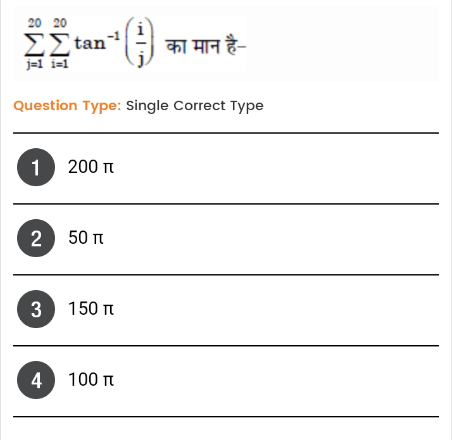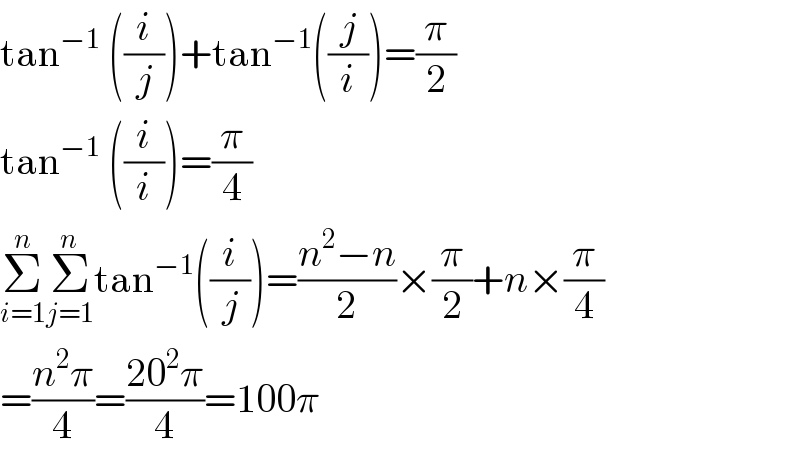Question Number 108802 by 150505R last updated on 19/Aug/20

Answered by mr W last updated on 19/Aug/20

$$\mathrm{tan}^{−\mathrm{1}} \:\left(\frac{{i}}{{j}}\right)+\mathrm{tan}^{−\mathrm{1}} \left(\frac{{j}}{{i}}\right)=\frac{\pi}{\mathrm{2}} \\ $$$$\mathrm{tan}^{−\mathrm{1}} \:\left(\frac{{i}}{{i}}\right)=\frac{\pi}{\mathrm{4}} \\ $$$$\underset{{i}=\mathrm{1}} {\overset{{n}} {\sum}}\underset{{j}=\mathrm{1}} {\overset{{n}} {\sum}}\mathrm{tan}^{−\mathrm{1}} \left(\frac{{i}}{{j}}\right)=\frac{{n}^{\mathrm{2}} −{n}}{\mathrm{2}}×\frac{\pi}{\mathrm{2}}+{n}×\frac{\pi}{\mathrm{4}} \\ $$$$=\frac{{n}^{\mathrm{2}} \pi}{\mathrm{4}}=\frac{\mathrm{20}^{\mathrm{2}} \pi}{\mathrm{4}}=\mathrm{100}\pi \\ $$
